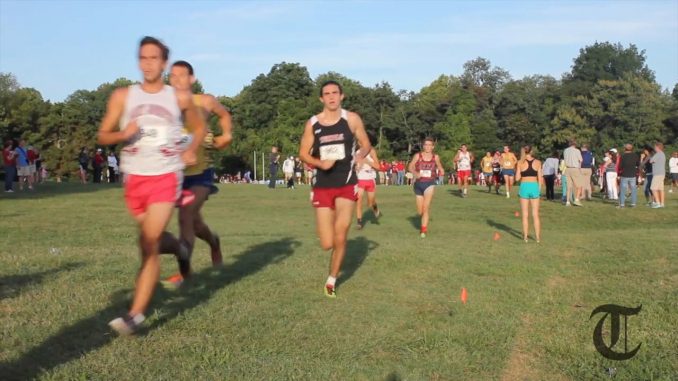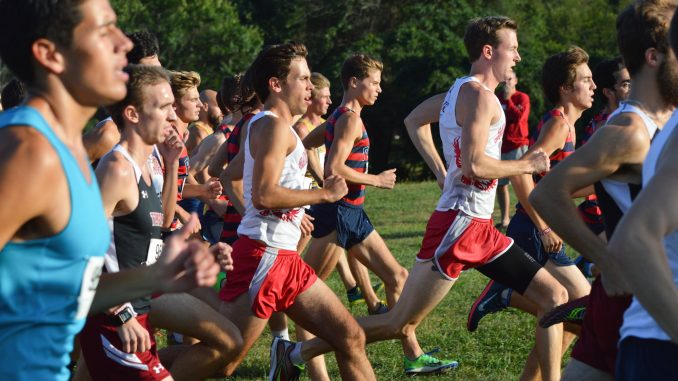
Belmont Plateau course reaches half-century mark



For Owen Glatts, not using the full length of Belmont Plateau during a pre-season race is about as big of a violation as there is.
“It’s almost like benching Larry Bird,” the Temple cross country runner said.
Glatts, who took part in the third annual Friend Big 5 Invitational at the course, said he believes Belmont’s difficulty is what makes it unique.
“Belmont is one of the hardest courses in the state,” Glatts said. “That’s how it got its reputation. I mean, the hills have names. If you bring that up to any local runner, it sends chills down their spine because they’re such brutal hills.”
Glatts knows this because the Belmont Plateau not only features an invitational for all of the Big 5 schools every year, but it also plays host for a plethora of high schools and league championships, including Philadelphia Public League and Philadelphia Catholic League schools, the Inter-Ac League championships and PIAA District XII championships.
The course has also featured collegiate championships and invitational tournaments as well. It held the Big 5 college championship, as well as the Mid-Atlantic Conference, East Coast Conference and, currently, the Atlantic 10 Conference championship meets.
Temple cross country coach James Snyder feels Belmont is unique because so many people use the course.
“The interesting part about Belmont that makes it stand out is that there is a lot of people that are familiar with it,” Snyder said. “It’s the most commonly used cross country course in the state of Pennsylvania. I would say [Belmont] is one of the most commonly used courses, probably next to [Van Cortlandt Park] up in New York, in the entire east coast.”
Glatts isn’t the only runner who knows the course well. In total, there are seven members on the men’s and women’s teams combined who ran the course in high school. Every Wednesday, the PCL has meets at Belmont.
In fact, the course plays a crucial role in the evaluation and the recruiting of runners from the surrounding areas.
“I would say [Belmont] is a distinct advantage because kids who are familiar with this course and don’t like the course, are kids that typically are afraid to train hard and work hard,” Snyder said. “Kids that know the course and love the course are the kind that grind and are blue-collar kids that I love to have here. Those kids are representatives of what we are trying to build here at Temple.”
The Belmont Plateau first opened in 1964 and is celebrating its 50-year anniversary this season.
The high school course at Belmont was originally designed at 2.3 miles. Then in 1974, the course was extended to 2.9 miles. After 15 years at 2.9 miles, the course was changed to 3.1 miles, a 5k, in 1989.
The original college course was designed for five miles. In 1999, the men’s college course was significantly redesigned at its current distance of 8,000 meters.
The original women’s course was set at three miles and was later extended to 5,000 meters in 1999.
During the 50 years that the course has been open, it has hosted many of the current coaches in the Big 5. Saint Joseph’s men’s cross country coach, Mike Glavin, and Villanova men’s cross country coach, Marcus O’Sullivan, each ran for their respective schools in college. The women’s distance coach at Villanova, Gina Procaccio, also ran at Villanova. All three coaches have run the course several times.
Bringing together all of these coaches is something Snyder said he looks forward to, and that he feels the rivalries are important to school history.
“Going through the transition that we’ve gone through with conference realignments and schools shifting different places, I feel like a lot of traditional rivalries have been lost over the couple of years,” Snyder said. “The neat thing about this race is that we are able to keep the continuity of the city rivalry that has existed for a pretty darn long time.”
Not only does Snyder find the history important, but the athletes do as well. For junior Ryan DeBarberie, being a part of the history is important.
“It’s pretty cool to put myself in the history too,” DeBarberie said. “To say that I competed in all of these races here where a bunch of great athletes have competed also, it means a lot.”
One of the original runners from when Temple first started using Belmont, Bill Mahoney, received both his bachelor’s and master’s degree from the university. Mahoney was the first runner to win the Big 5 championship four years in a row, and each year setting a new record for best time.
“Fifty years later, it still brings out the emotions of competitiveness,” Mahoney said. “This course in its original form is much more difficult than any other.”
Ed Lefurge III can edward.lefurge@temple.edu of on twitter @Ed_LeFurge_III
Copyright 2018 The Temple News.
Be the first to comment